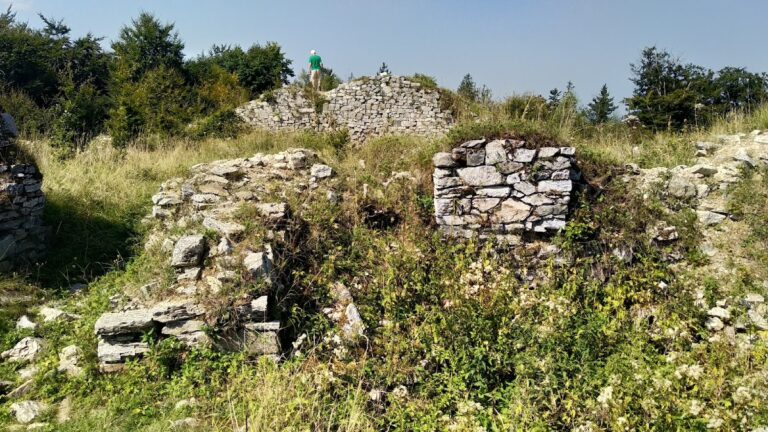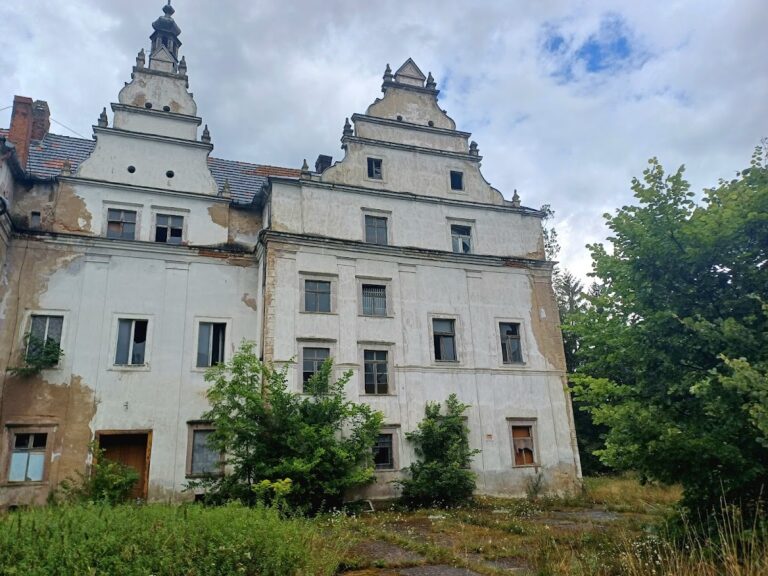Kamieniec Ząbkowicki Palace: A Neogothic Landmark in Poland
Visitor Information
Google Rating: 4.7
Popularity: High
Google Maps: View on Google Maps
Official Website: palacmarianny.com.pl
Country: Poland
Civilization: Unclassified
Remains: Military
History
Kamieniec Ząbkowicki Palace is situated in the municipality of Kamieniec Ząbkowicki in present-day Poland. The palace was commissioned in 1838 by Princess Marianne of the Netherlands (Marianna Orańska) as her rural residence. The design was entrusted to the notable architect Karl Friedrich Schinkel, and construction began the same year, highlighted by the ceremonial laying of the cornerstone on October 15, 1838.
The building process faced interruption in 1848 following Princess Marianne’s divorce from Prince Albrecht of Prussia. This pause in the work lasted until 1853 when construction resumed, albeit with occasional breaks, and ultimately continued until the palace’s completion in 1872. The official inauguration took place in May 1873, marked by the unveiling of a monument dedicated to the goddess Nike, symbolizing victory.
During World War II, the palace was repurposed by German forces as a storage site for artwork looted throughout the Silesian region. After the war ended in 1945, Soviet soldiers caused significant damage by looting and destroying much of the palace’s interior. This devastation culminated in a major fire in February 1946 that severely impaired the architectural complex.
Following the war, some of the palace’s marble was salvaged for reuse in the construction of the Congress Hall within Warsaw’s Palace of Culture and Science. Restoration efforts began decades later in 1984, under the stewardship of private leaseholder Włodzimierz Sobiech, who undertook intermittent renovation work until his passing in 2010. The palace then returned to municipal ownership in 2012, and from 2013 onward, the Polish Ministry of Culture has provided funding for further restoration.
In 2024, the ensemble comprising the palace, its architectural surroundings, landscaped gardens, and the nearby former Cistercian abbey complex was officially designated a Historic Monument of Poland by presidential decree. This recognition acknowledged the site’s multifaceted historical, artistic, scientific, spatial, and landscape significance.
Additionally, the estate has historical ties to local horticulture. In 1865, the palace gardener C. Braun developed a distinctive apple variety named “Prinz Albrecht von Preussen,” a hybrid of the Aport and Renet Baumann apples. This cultivar gained popularity in the surrounding region and remains part of the estate’s heritage.
Remains
The Kamieniec Ząbkowicki Palace stands as a monumental example of neogothic architecture laid out on a broad rectangular plan approximately 75 meters long by 48 meters wide. Its construction incorporates a combination of materials, including Silesian marble, sandstone, and mica schist, contributing to the textured appearance of its facades. These are further adorned with a ceramic frieze positioned below the cornice, while stylistic influences reference North German brick Gothic, English neogothic, and Moorish-Sicilian designs.
Four imposing corner towers rise to a height of 33.6 meters each, framing an inner courtyard measuring roughly 19.5 by 18.2 meters. This courtyard is divided by an arcaded cloister, which elegantly connects the northeast and southwest walls and provides access to approximately 100 vaulted rooms within the palace. These rooms were originally linked by enclosed arcades surrounding the courtyard, creating a cohesive spatial arrangement.
The front facade features a prominent gable bearing a cartouche that displays the coats of arms of Prince Albrecht of Hohenzollern, represented by an eagle, and Princess Marianne, depicted with a lion. The complex is enclosed by a fortified wall accented by four pairs of round bastions at the corners, hinting at medieval defensive architecture. Within this enclosure, stables occupy the southeast side while coach houses are situated on the northwest, indicating the estate’s functional organization.
Inside, the palace originally contained grand spaces such as a large hall in the front risalit—an architectural projection facing the garden—and a pillarless dining hall. This dining hall was decorated with murals inspired by the refectory of Marienburg, a medieval castle renowned for its halls. The furnishings, designed by Ferdinand Martius, a student of architect Schinkel, complemented the palace’s stylistic coherence.
Surrounding the main building is an extensive park and forest complex encompassing about 1.15 square kilometers. The grounds were designed between 1858 and 1868 by Peter Joseph Lenné, a landscape architect notable for integrating natural features with artistry. The terraced gardens include staircases and colonnades, as well as fountains decorated with Gothic motifs, all arranged to enhance views of the Sudeten Mountains. The lowest terrace features a water basin that ties the garden to the surrounding landscape.
The estate also contains several auxiliary structures that contribute to its historical footprint. Among these are the mausoleum of the Hohenzollern family, which underwent restoration and reopened in 2018, the castle’s boiler house, remains of a former hunting lodge, and various minor buildings. The park itself is home to over one hundred protected natural monuments, including individual trees and shrubs such as pedunculate oak, common beech, eastern white pine, small-leaved lime, and common yew. These species are spread throughout the park with denser groupings near the palace and within the southern and central forested areas.
The palace complex, along with its two outbuildings for stables and coach houses, the landscaped park with its terraces, the former evangelical church now serving as an exhibition space, the Hohenzollern mausoleum, a former monastery wine cellar, a pumping and boiler house, and a gasworks building, are all registered as historic monuments. This collective preservation status ensures the survival and recognition of the palace and its surroundings as a significant cultural heritage site in Poland.










